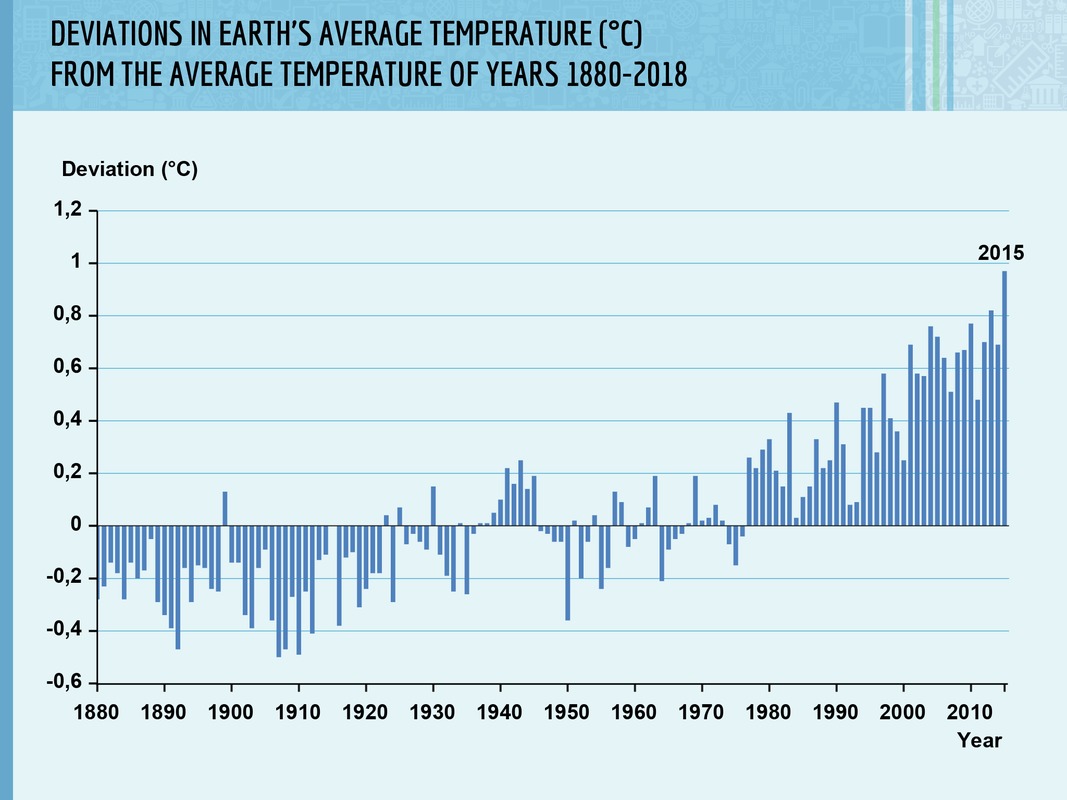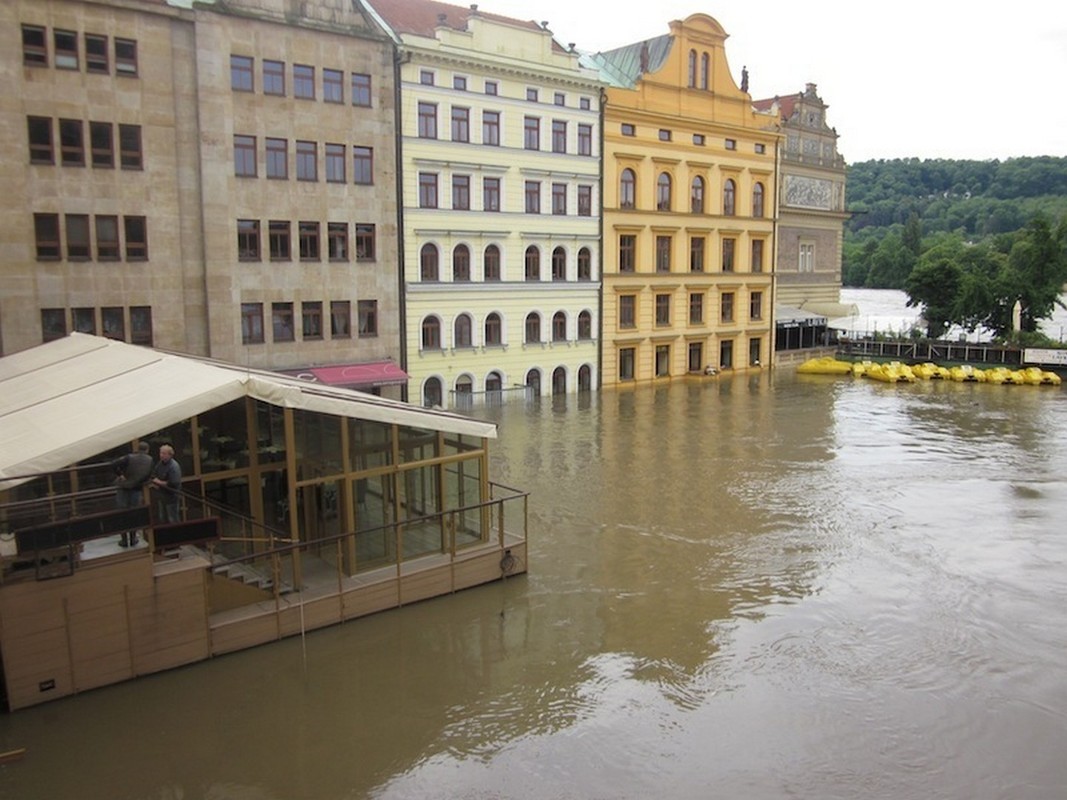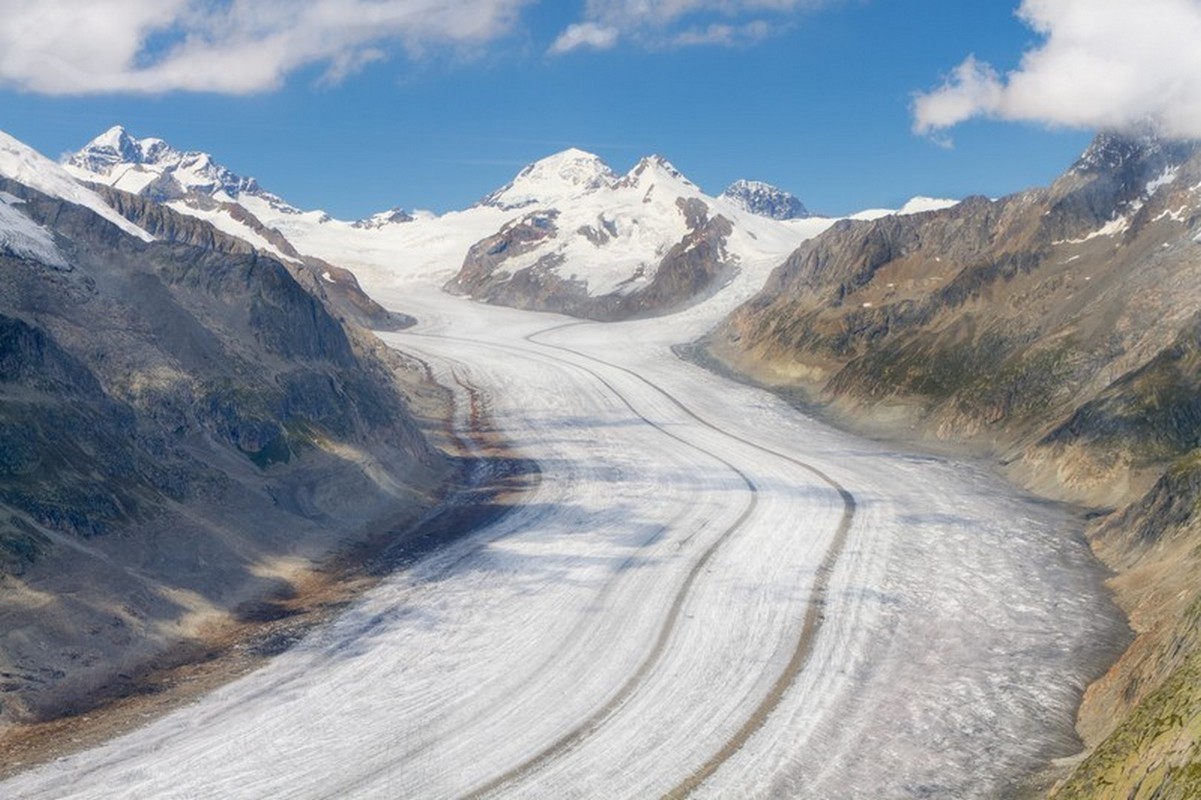13.3 The effects of climate change
Climate change causes an increase in our planet's average temperature. It has been estimated that the current average temperature of planet Earth, approximately 15 degrees Celsius, will probably rise by a couple of degrees druing the next 100 years.
![]() NASA: Earth's surface temperature
NASA: Earth's surface temperature

The average temperature of our planet increased by 0,74 degrees over the course of the 20th century. This increase in temperature has continued to the current century, and shows no signs of slowing down.
The temperatures will also rise in parts of the Earth that are currently in the frigid geographic zone. The average temperature of Arctic regions can increase almost twice as much as the temperature of other areas.

The polar bear is only one of the many species threatened by global warming.
Global warming causes a variety of changes in the chances of survival of animal and plant species. The most drastic changes can be seen near the Arctic Ocean, where species like the polar bear and the walrus are already threatened by shrinking habitats. If the planet's atmosphere continues to grow warmer, these species might become extinct.
Different extreme weather phenomena, such as storms, floods, droughts and forest fires, will also increase as the planet's atmosphere continues to grow warmer.
![]() Animations by NASA
Animations by NASA

Extreme weather phenomena such as floods will increase as a result of global warming. Floods in Prague, Czech Republic during the summer of 2013.
As the Earth's oceans grow warmer as a result of climate change, the likelihood and strength of tropical storms will increase. Warmer oceans can also cause tropical storms to become more frequent even in areas where they previously were rare.
Droughts and heavy rains will also increase as a result of global warming, causing problems for farming and agriculture. Droughts also increase the risk of forest fires, which in turn release more greenhouse gases into the planet's atmosphere.

The famous Grossglockner glacier in Austria is shrinking at a rapid rate.
Mountain glaciers have already shrunk in size as a result of human-caused climate change. When the glaciers continue to melt, the planet's sea levels will slowly rise. This will cause shorelines to move further back, reducing the amount of land available for human habitation and agriculture.